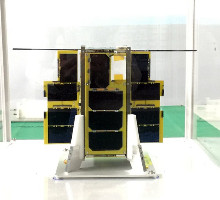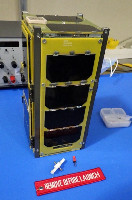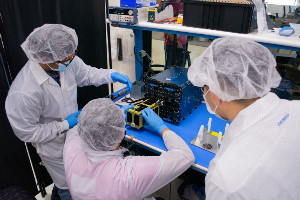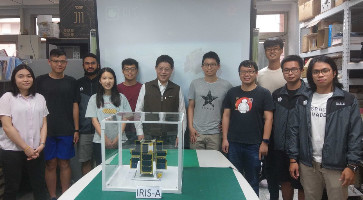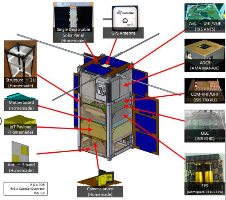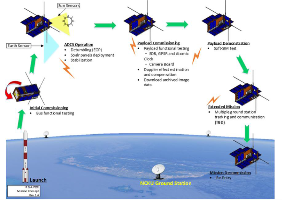| Spacecraft | IRIS-A (Intelligent Remote-Sensing and Internet Satellite) |
|---|---|
| Spacecraft type | CubeSat |
| Units or mass | 2U |
| Status | Operational (Numerous amateur radio reports last checked on 2022-05-26) |
| Launched | 2022-01-13 |
| NORAD ID | 51044 |
| Deployer | QuadPack (XL) [ISISpace] |
| Launcher | Falcon 9 (Transporter-3) |
| Organization | National Cheng Kung University |
| Institution | University |
| Entity | Academic / Education |
| Country | Taiwan |
| Launch brokerer | Momentus |
| Partners | Odysseus Space |
| Oneliner |
Test technology to improve the quality of downlink signals. |
| Description |
Demonstrate Internet of Things. Challenge is the lack of frequency bandwidth for data communication. Key features implemented in payload:
Odysseus Space is providing pre-launch testing and arranging launch services. The mission of the LoRa receiver (433.365MHz) is to collect weak LoRa signals from the ground terminals of amateur radio operators. In order to understand the issue of Doppler frequency shift and path lose, so that the ground signal can be measured on the uplink, stored and forward issue IRIS-A also provide FM voice transponder, allowing the operator to have both digital and voice operation modes. The students can learn to understand about each sub-system of satellite. The issues of Doppler frequency shift have always plagued the applications and creativity of amateur radio operator. Here, The LoRa payload receivers receive signals, through the Store and Forward, all Ham radio operators can have more creativity and application. According to the LoRa standard parameter settings we provide, Ham radio operator upload the data to IRIS then able to get uplink data from IRIS-A website through the store and forward function. In addition. The IRIS-A also provide FM voice transponder, allowing the operator to have both digital and voice operation modes. |
| Results | |
| Notes | |
| Sources | [1] [2] [3] [4] [5] [6] |
| Photo sources | [1] [2] [3] [4] [5] [6] [7] |
| COTS subsystems |
|
| Subsystems sources | [1] |
| On the same launch |
|
Last modified: 2023-06-03
